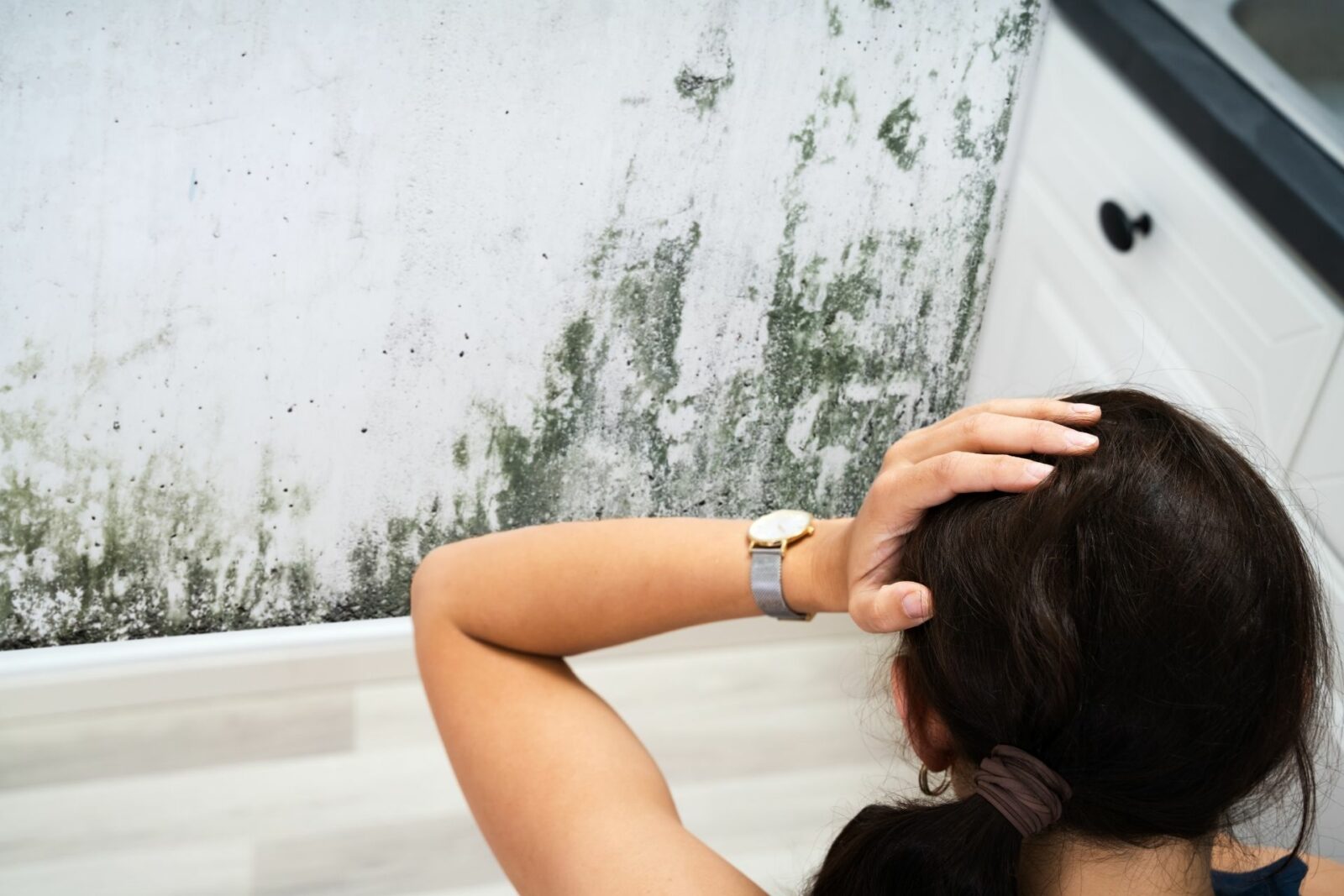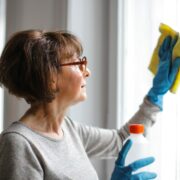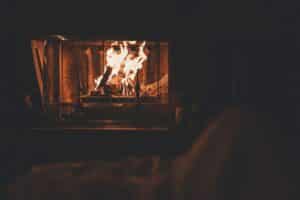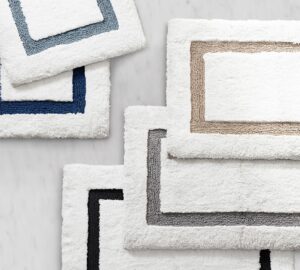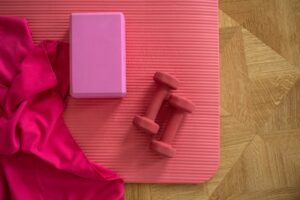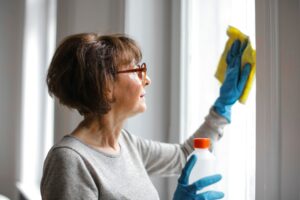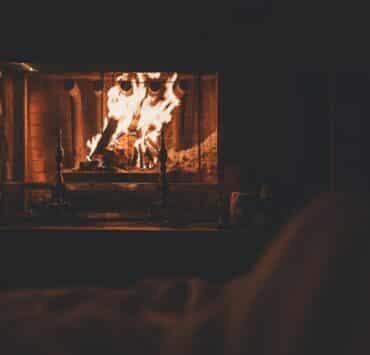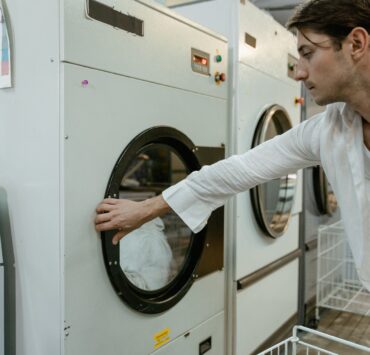Mold is an umbrella term for fungi that grows in the form of multicellular filaments. These filaments are called hyphae. To help give a clearer picture of this, mold grows up and outwards in branches. This can result in mold growth looking puffy, wooly, velvety, or even hairy. Many types of mold growth are elevated from the surface.
Mildew on the other hand, is a certain type of mold or fungus. Mildew grows and spreads out flat on its surface. It looks more like a gray stain on a surface instead of a fuzzy overgrowth. In home terms, mold and mildew are used interchangeably to refer to fungal growth. But scientifically speaking, mildew is a type of mold.
When it comes to our homes, both mold and mildew are unwanted. They indicate an overgrowth of fungi due to excess moisture. When left alone, mold and mildew can and will continue to grow and decrease your home’s resale value.
[ez-toc]How To Clean Mold And Mildew
When comparing mold vs mildew, mildew is easier to clean. You can easily identify mildew growth if you see white or gray patches on a surface. Mildew growth is flat on a surface, but can look powdery up close when left unchecked. You can consider it mold growth in the early stages.
Mold, as touched on earlier, grows up and outwards from its surface. You know you have mold in your home if it looks fuzzy or hairy and is colored green, red or black.
Although mold is more stubborn, cleaning mold and mildew is the same approach. First, wear a facemask, goggles and gloves. This will protect you from inhaling spores that may fly off when you clean. To lessen fly-away spores, weigh them down with a generous spritz of water.
For the actual cleaning of mold and mildew, you can use any of the following solutions to clean and disinfect an area that has mold or mildew growth:
- Warm water and mild dish soap
- 1:1 ratio of warm water and vinegar
- Water and bleach
When you have your chosen cleaning solution, spray it directly on the affected areas. Wipe off mold and mildew with a microfiber cloth or a cleaning sponge. Keep a small bucket of water handy to rinse your sponge or cloth accordingly. Make sure to dump out the water and replace it. You don’t want to unintentionally transfer mold spores back onto the surface you’re cleaning from the contaminated water.
Once you’ve thoroughly wiped down your surface, allow it to air dry completely.
How To Deal With Stubborn Mold
If you have a large concentration of mold contaminating an area in your home, wiping it down with a cleaning solution isn’t enough. This is because mold ‘roots’ into its surface. Even when you’ve wiped off the top layer, the rooted spores still remain. You can expect the mold to quickly grow back.
You can opt for double cleaning with a water and bleach solution, but when this doesn’t work, you’ll need to call a professional.
Mold removal services typically charge $13 to $28 per square foot of mold removal. Prices can go higher if the mold is severe. This would be cases like mold growth behind walls or on subfloors. Mold removal can take a day to a week to clean but severe cases can take months to completely rid your home of mold.
To save yourself from costly mold removal services, always keep your home clean. Mold and mildew prone areas are anywhere exposed to moisture so keep an eye out. If you find any exposed grout lines, cracks on tiles or your floor, mold is likely to grow behind and damage your home from the inside. To save yourself from a big moldy headache, literally and figuratively, address these issues immediately.
Why You Should Clean Mold And Mildew
Keeping your home mold and mildew free isn’t just for aesthetics and a reflection of your home’s cleanliness. Mold and mildew are common allergens. Exposure can cause itchy eyes, a runny nose and even a cough due to mold and mildew spores floating in the air.
Chronic exposure to mold is known as mold toxicity. Mold toxicity can trigger asthma, other respiratory issues and lower the overall air quality in your home. [1]
When left untreated, mold and mildew growth depreciate the resale value of your home by up to 50%. This is because mold eats at its surface material and causes it to decay. Even after treating mold, your home loses approximately 3% of its value.
How To Prevent Mold And Mildew
The good news regarding mold and mildew is it’s easy to keep at bay with a proper and consistent cleaning practice. Many surface sealants, paints and finishes are also resistant to mold and mildew spores.
Keep in mind that when you can already see mold and mildew, it’s already considered an overgrowth. Mold and mildew spores form, take root and grow long before you can see them. It’s best to give a thorough and regular wipe-down to areas prone to mold and mildew growth such as:
- Bathrooms
- Underneath sinks
- Behind the toilet
- Plants and their immediate surrounding areas
- Crawl spaces
- The ceiling areas near exhaust fans
- Anywhere there are drain pipes
- The laundry room
- Underneath carpets
- Underneath bed frames
- Behind tiles with exposed grout lines (This should be sealed immediately).
Paired with regularly cleaning mold and mildew prone areas, you can prevent growth with proper ventilation. Keep windows open especially on bright sunny days. Air vents should also be checked regularly. This is to ensure that they’re clear from any blockage that could be hampering air-flow.
During times with prolonged rainfall or during winter, consider running a dehumidifier to keep mold-causing moisture at a minimum.
When it comes to a clean home, mold vs mildew is an irrelevant point. You don’t want either growing in your home for health’s sake and the value of your home.
